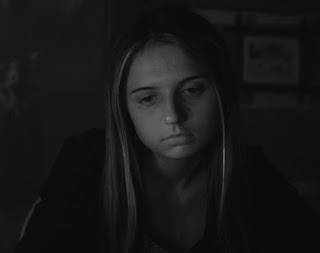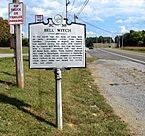Text © Richard
Gary / Indie Horror Films, 2020
Images from
the Internet
Beyond Hell
Directed by Alan
Murray
Dark Spirit
Films / Indican Pictures
89 minutes, 2019
/ 2020
www.beyondhellfilm.com/
www.facebook.com/beyondhellfilm
“Just say no!” was Nancy Reagan’s rallying cry in the 1980s, but films where taking any drugs leads to mayhem, be it insanity, murder or turning the user into a zombie is hardly new. For example, there were a string of anti-marijuana releases in the 1930s and ‘40s (e.g., She Shoulda Said No [1949], The Devil’s Weed [1949], and the infamous Reefer Madness [1936]). That theme still runs occasionally with the likes of Dropping Evil (2008) and Bong of the Dead (2012).
This Canadian film takes that trope and makes some sinister changes: this derivation of the drug, changa (apparently a real thing; being straight-edged, I had to look it up on Wikipedia), takes the user to literal hell. But I am getting way ahead of myself here.
We open up for the prologue in the jungles of South America where apparently indigenous native people speak perfect English and talk like professional wrestling announcers (wait…what?). It is here that this film’s version of changa originates (though in reality it is generally considered to have come from Australia… thank you Wikipedia).
 |
| Kearsten Johansson |
The main protagonist, Maryssa (cute, doe-eyed Kearsten Johansson) was the good girl all through high school. Now she’s in college and wants to learn about some… tacit knowledge (life experience). Her two friends (from high school, now also in college) are the bad girl, Brooke (Natalie Jane), and Heather (Dominque Smith), who is the go-between since Maryssa and Brooke are frenemies. One could picture Heather with the good angel – Maryssa – on one shoulder and the devil – Brooke – on the other.
On the testosterone side, there are buddies Tyson (Chris Kapeleris), who is Heather’s boyfriend, and Jake (the heavily inked Sebastian Deery). Jake is the object of Brooke’s lust, but he’s into Maryssa (sort of a Ginger and Mary Ann choice). The five head off to a party, stopping off at Seth’s (Sean Rey), a dealer’s abode, to pick up said changa. While there, they try out this new drug and get shitfaced, but Maryssa alone somehow manages to get transported to another dimension (supposedly hell, I am assuming from the film’s title), where she is linked to the multi-toothed demon Belial (Gavin R. Downes) who looks like a creature out of the cult film Equinox (1970). Then the slaughter begins, slowly but surely.
 |
| Sebastian Deery |
Belial starts to kill off her friends, and because she is connected to him, she can witness all the murders though she’s not physically there. The demon’s goal is the trope that if he can gather enough souls, he can enter our world at will and bring his bad demon buddies with him, to enslave and torture humanity.
The film isn’t brilliant, but then again, it is also a lot of fun. The cheese level is high, as is the blood and gore (sometimes looking good, other times cheesy). This is solid independent fare that is both cliché at times, and yet smart in that it takes some old tropes and mixes them around a bit. Again, while it has been done before, part of the fun is watching Maryssa turn from shy, sheltered girl to warrior woman to try and fight the malevolent power.
This comment has nothing to do with nothing, really, but who throws up in the toilet without lifting the seat, no matter how out of it one is, even if one misses the toilet completely? Just sayin’.
 |
| Natalie Jane |
This is the director’s first feature film, other than a short, and it shows great promise. There are definitely things one can point to, such as Belial’s make-up moving every time he talks, which is hard to make out at times thanks to the effects given to his voice to make it sound “demonic.” While it’s not a comedy, there are a few moments where one cannot help but chortle at the way certain lines are spoken, or on-screen actions. But despite that, overall, it was better than I expected (and I always hope for the best), and it certainly kept my interest (and not just for the numerous topless women).
The scenes in hell are visually a bit on the dark side, but this viewer was able to make out what was happening. The end result of the storyline is a bit convoluted, but it’s still pretty satisfying, and tying it in to what is happening in the world today is a nice, intriguing twist. It also might have been good, however, to explain a bit about the Mexican god Quetzalcoatl (I have been to its temple at Teotihuacan near Mexico City), who is actually a feathered serpent, though featured in human forms here.
There was also a nice mix of both practical SFX and digital effects. And speaking of Belial’s make-up, it actually looks pretty decent for its budget. In fact, most of the creatures/demons look good. The acting varies, as one would expect, but everyone seems to be on board, which is a good thing.
One aspect I really enjoyed in the film was the Interesting transition b-roll shots between scenes, usually sped up in the style of Koyaanisqatsi: Life Out of Balance (1982). It’s bright and colorful, and works well as separation of segues from one set piece to another.
Thanks to its film boards, Canada helps produce a lot
of its independent releases, unlike in the United States (anyone from the ridiculous
Right want to scream socialism?), so the industry is supported, whether
the film is top notch, really bad (remember The Room?), or in this case,
an enjoyable exercise in a genre that is always in demand. I’m grateful to the
Toronto Film Industry Arts and Entertainment Foundation, and I’m hoping this is
just a stepping stone for Alan Murray to send us more fare. This release certainly
lends itself to a sequel, and I look forward to it.
The film is now available on Digital HD via Apple TV, Google Play, Prime Video, FandagnoNOW, and more, and will be on DVD in mid-January.


























